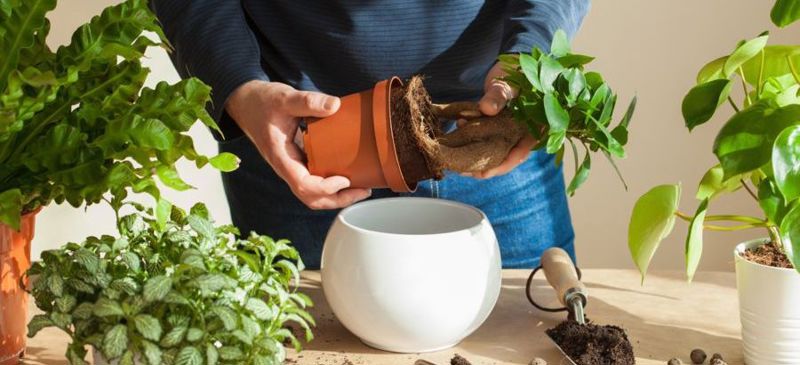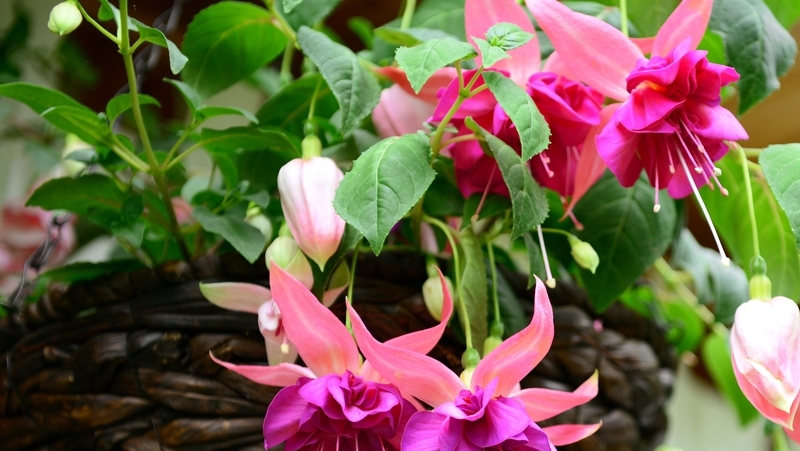Yates Account
Join now
Create a Yates account today!
Sign up to join the Yates Garden Club for monthly e-mails packed with seasonal inspiration, tips for success & exclusive promotions.
Plus if you’re a Garden Club member you can take part in the Yates Growing Community - a blog to share successes, get advice & win prizes in fun challenges along the way!

Forgot password
Enter the email address associated with your account, and we'll email you a new password.

Commonly asked potted plants questions frequently focus on how best to start your indoor plant collection, including what pots and when to fertilise.
What is the best potting mix?
Always use a good quality potting mix (not soil) for your containers. Soil is variable and often too poorly drained to use in pots. Potting mixes should have adequate drainage, good wettability, and suitable nutrient levels and pH. Yates Premium Potting Mix is a good example of a quality mix.
What is the best size pot for my plant?
Remember that pots dry out much more readily than soil and are also more likely to be affected by the surrounding air temperature. The larger the pot, the easier it will be to look after. Large pots retain moisture and maintain a more even temperature but it’s a good idea, for aesthetic reasons, to keep the size of the plant in proportion to the container.
Select a pot that will stand the test of time, a cheaper pot won’t last and will need to be replaced. The black plastic pots that most plants come in do heat up quickly and provide little insulation.
What is the best type of pot?
There’s a wide selection of different containers available, each with its pluses and minuses. They include:
Terracotta: Traditional terracotta pots are made from fired clay. They are attractive and fairly expensive. Because they’re porous, they lose moisture from the sides but the evaporation from the pot sides helps the mix to stay cooler.
Plastic: Lightweight and economical, plastic pots come in a wide range of colours. Because of their non-porous sides, they help to retain the moisture in the potting mix. Black plastic pots absorb heat, which can raise the temperature of the mix to unacceptably high levels.
Glazed Pots: Ceramic Pots are waterproofed with a clear glaze coating. Depending on the size, they can be very expensive.
Do I really need to fertilise my plants?
YES! Potted plants need to be fertilised regularly during their growing period. For houseplants, the easiest way to do this is with Yates Thrive Indoor Liquid Plant Food. If you prefer something organic-based, use Yates Thrive Natural Fish & Seaweed+ Plant Food Concentrate. If you're the forgetful type or if you're constantly away for work, try Yates Thrive Plant Food Spikes Plants & Ferns or Yates Thrive Indoor Plants & Ferns Liquid Plant Food Drippers.

How much do I need to water my plants?
- It is impossible to give a set regime for watering container plants. The best rule is to give plants a good drink when the top centimetre of the potting mix feels dry. It can be helpful to pretend that the container is empty and you are filling it with water – this gives a good indication of how much water is needed. Make sure that the water drains freely and is not left sitting in a saucer underneath the pot. Use a water breaker on your hose so that you don’t ‘blast’ the mix out of the pot.
- Water holding crystals – polymer granules that absorb and hold moisture – can be added to the potting mix before planting or can be placed in holes around the root system of an established potted plant. Look for Yates Waterwise Water Storage Crystals.
- Container plants that have dried out can be difficult to re-wet. Treat the mix with a soil wetter. and mulch the top of the potting mix with a layer of organic mulch.
Hanging Baskets
Hanging baskets look delightful but need very special care. Those in the shade are relatively easy to look after but, if hanging in the sun, baskets dry out very quickly. Wire baskets with fibre or bark linings are attractive but it’s wise to put a sheet of plastic inside the liner. Poke a few holes in the plastic sheet to allow drainage before filling with premium potting mix. After planting and watering, any plastic sheet that is visible can be trimmed away with a pair of scissors. The plastic sheet won’t be seen but will make a huge difference to the water-holding ability of the basket.
Plastic hanging baskets are easier to care for because they retain more moisture than wire baskets. The same rule applies with baskets as with other pots – the bigger the container, the easier it is to look after!

















Share
Share this article on social media